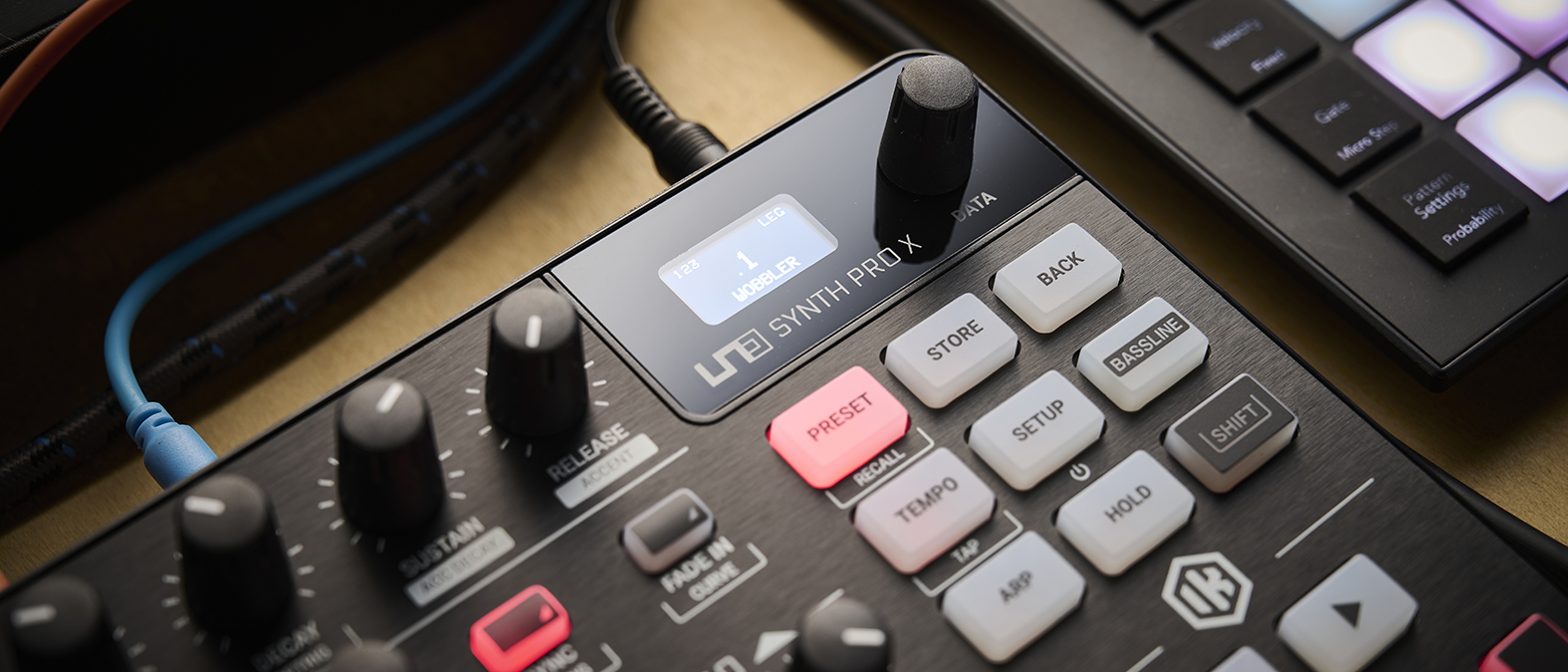MusicRadar Verdict
This is the first UNO Synth to feel like a Proper analogue synth and the sound is as big and bold as ever. Great for sounds used in every electronic music genre and for designing your own.
Pros
- +
Lovely sounds and loads more hands-on control over them compared to previous UNO synths
- +
Different effects and Drive control mean the sound can be more varied
- +
The price is still very good considering what you get
Cons
- -
The ‘keyboard’ really isn’t great so you’ll want an external one
- -
The choice between UNO Synth Pro and Pro X is slightly harder now
MusicRadar's got your back
IK Multimedia UNO Synth Pro X: What is it?
The IK Multimedia UNO Synth range has given us pretty much everything we need from an analogue synth in 2023: fat sounds, ease of use, compatibility with modular, different models to choose from and, most importantly, keen price points.
You can get the basic UNO Synth model or choose from two more Pro versions – each with practical differences to suit different users. You’d think, then, that there might not be room for a new entry, but IK thinks there is, resulting in this new UNO Synth Pro X. And it might be right because, with extra controls and a few sonic injections, this could be the most ‘analogue’ synth in IK’s synth range yet.
Digitally-controlled analogue synth with 3 oscillators (variable waveshape), paraphonic architecture, 2 filters (2/4 pole, HP/LP), 2 LFOs, 3 envelopes, 16 slot Modulation Matrix, 10 effects (2 modulation, 5 delay, 3 reverb) in 3 slots, 64-step sequencer, arpeggiator, 256 presets
Connections: MIDI in/out, audio out x 2 (6.3mm) plus 3.5mm headphone; audio in (3.5mm); 2 x CV Gate in and out, USB C (can be powered by this), PSU jack
Dimensions: W x D x H (mm): 333 x 150 x 50, weight (g): 800
The UNO Synth line started out with the smallest and cheapest model, the UNO Synth. This lightweight analogue synth was released in 2018 and was and still is IK’s attempt to get some of the cheap analogue synth action that the likes of Korg (with the VOLCA range) and Arturia (with the MiniBrute) had started reeling in over a decade ago.
With big analogue sounds, an easy-to-use architecture and few moving parts to keep the price down to a very reasonable €230, this original UNO has been a successful synth, so much so it started a family.
IK’s UNO Drum followed a year later with a lovely workflow and analogue and PCM drum sounds for not that much more cash. UNO Synth Pro then came out in 2021 with two new models under that Pro name: a desktop version with a touch-sensitive keyboard, and a bigger model with similar specs but boasting a full-size, semi-weighted Fatar keyboard. The desktop model has touch strips for pitch and modulation, while the larger keyboard has wheels, but aside from that they are identical synths retailing at €270 (for the desktop) and €500.
This latest UNO Synth Pro X model is top of the tree in terms of specs – which we’ll come to – but its lack of a proper keyboard keeps its retail price at €500. The first obvious question, then, is ‘what does the X bring to the UNO party?’
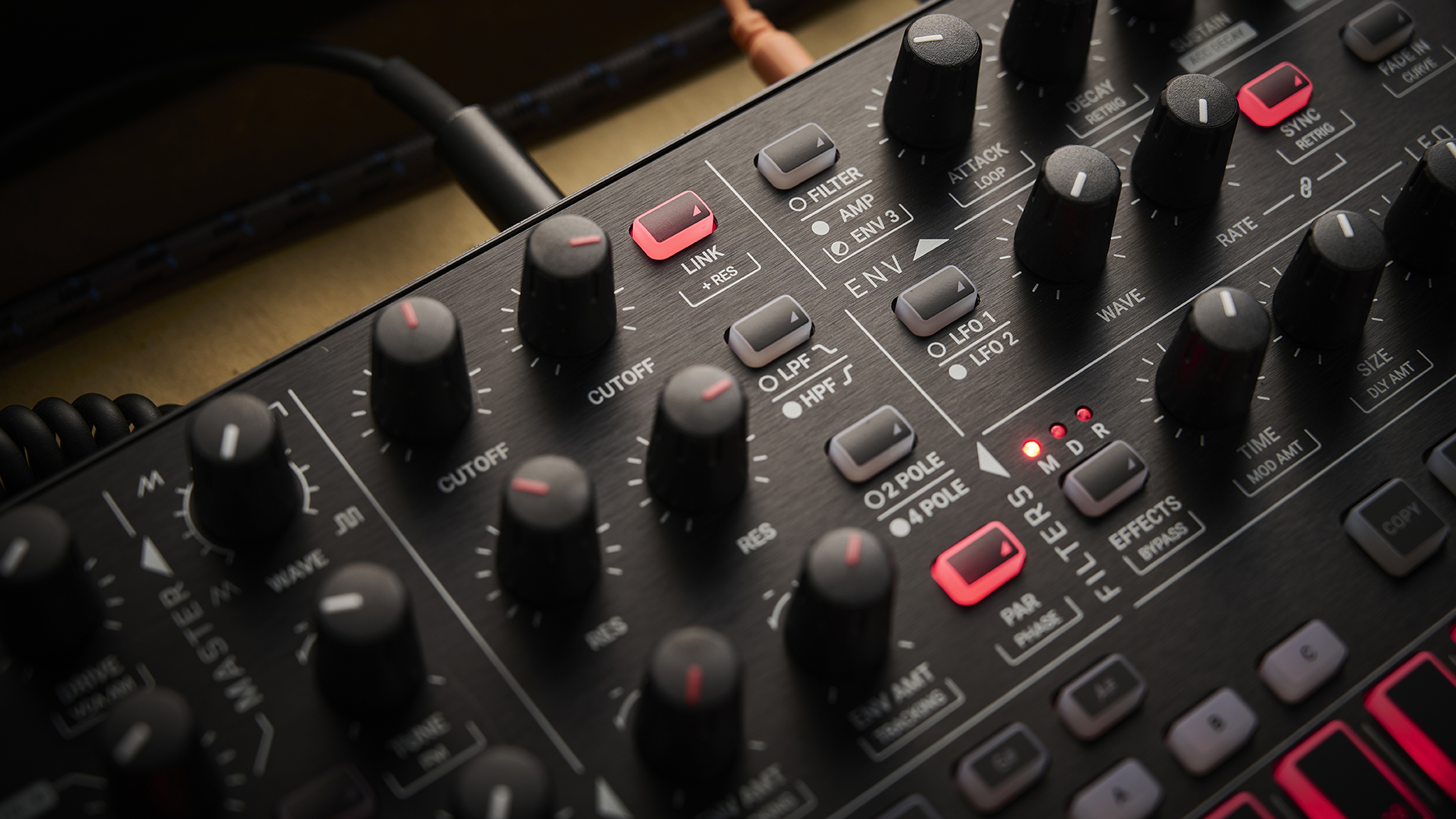
IK Multimedia UNO Synth Pro X: Performance and verdict
The dual-filter, 3-oscillator paraphonic engine is still in place as are the number of presets (264) and 64-step sequencer. But gone is the matrix and button combo that makes the Pro and original synths so easy to use by way of minimal rotaries. Instead, UNO Synth Pro X’s front panel is packed with some 23 dials, including a set of multi-function buttons alongside each section to access more sets of parameters. A useful Shift button also unlocks another underlined parameter beneath some of the dials.
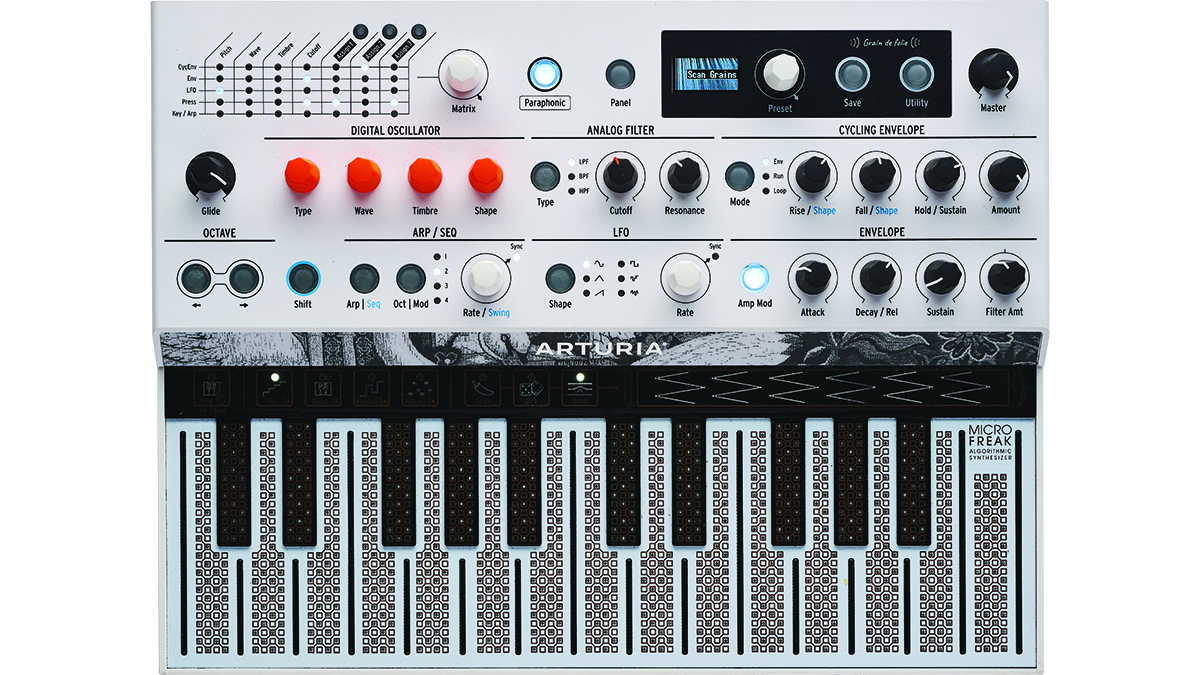
Arturia MicroFreak
In many ways, this is the polar opposite to UNO Synth Pro X with a hybrid analogue/digital architecture and a dozen engine modes. However, it has a similar paraphonic engine, sequencing, and a great modulation matrix, and is also fab for sound design.
IK Multimedia UNO Synth Pro
Same price, same engine, and similar results. The Pro X has the hands-on controls and more sound design tweaking possibilities but the Pro (and it’s the bigger one we’re talking about here) has the proper keyboard. So it’s keys versus knobs. Your decision.
Korg Minilogue XD
A desktop version of the excellent Minilogue offers fantastic analogue sounds, great controls and other very similar features as UNO Synth Pro X
With the multifunction operation, you get, for example, a set of standard ADSR dials but these can be switched between the filter, amp and a new envelope 3 options, while another function button switches between the two LFOs. Similarly, the filter function button switches between the 2- and 4-pole and LPF and HPF filter options, and each of the three oscillators can also be switched between, so you can control each’s continuous waveshape, tuning and level.
Without wishing to take anything away from the Pro or original UNO synths, these extra controls add an instant sense of seriousness. There’s none of the occasional knob wobble that you get with the desktop Pro and there’s a weight to Pro X that makes it feel more, well, Pro. It certainly sits comfortably and firmly on any desktop and is extremely approachable and tactile. And overall it has to be said that with these extra controls, Pro X suddenly feel more ‘analogue’ than its siblings, even though they all share a similar analogue architecture and you can wrestle very similar sounds out of all of them.
We say ‘similar’ because Pro X does add differences in this regard too. You get that extra envelope, plus a Drive rotary to control the analogue drive effect for extra grit. And while this effect was an option in Pro, there are different effects here compared to Pro’s.
The main one is the new Shimmer reverb that replaces the reverse and spring ‘verbs and is exactly as its name sounds, ladling on some lovely atmosphere wherever you spill it. A Uni-vibe effect also replaces the phase and flanger effects so the actual number of effects is ten – down from 12 on the Pro – but they feel just as, if not more flexible as those on the Pro, and that Shimmer ‘verb is a highlight. You also still get a very flexible three slots to put the effects in – Modulations, Delays or Reverbs – at any one time. (Once again a function button selects between them.)
Connectivity options are as good as the Pro, so they cover a lot given the space available. Standard MIDI (in and out) and Audio (two out) connectors sit alongside an audio in so you can route an external signal through the Pro X’s filter and effects. There are also two assignable CV/Gate ins and outs so you can route to and modulate modular gear (and vice versa).
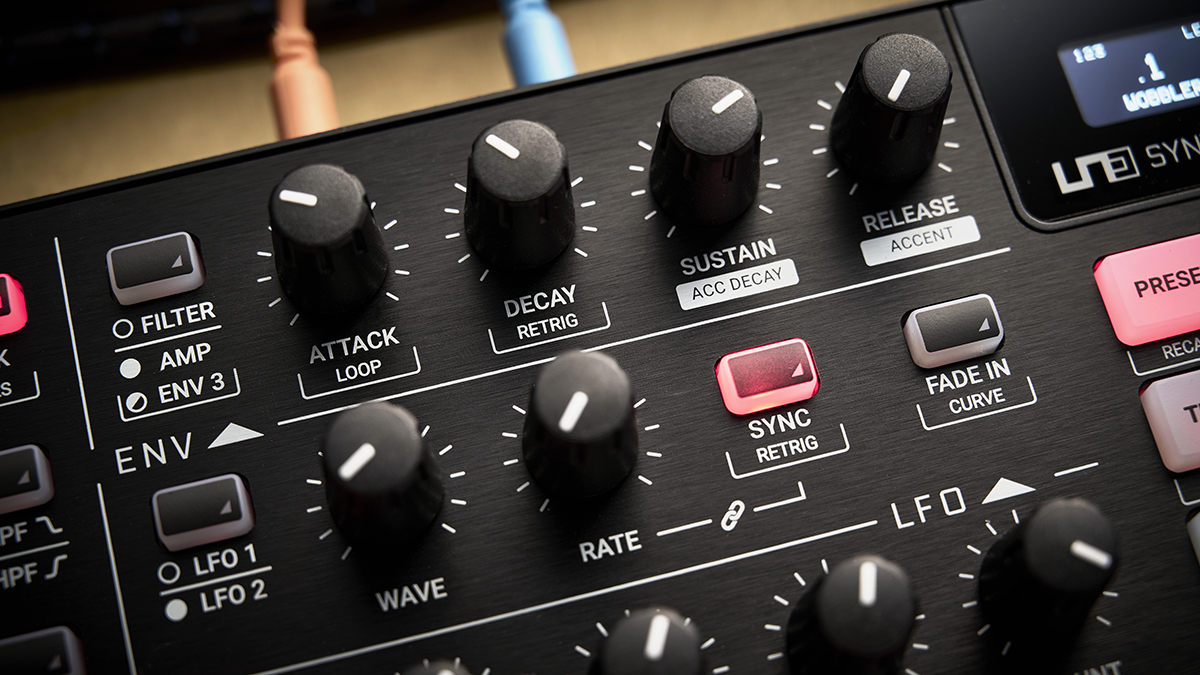
Sequencing and playing
The Pro X obviously lacks the full-sized keyboard of the larger Pro but can be played via a set of 13 buttons which covers an octave (plus an extra C) that you can step up or down by two. It’s not a great playing experience, and we wonder if some kind of workaround using the sequencer buttons would have been better. It’s maybe just there to audition and play UNO Synth Pro X on the road (Pro X can be powered by USB), but back in the studio, you’ll want to use Pro X with an external controller keyboard.
To the onboard sounds and we’re used to the UNO analogue sound being clean and fat, and that is maintained here, albeit with some extra layers. When you load in a preset – which is a couple of presses of the Data dial – you also load in a sequence that IK have programmed across up to 64 steps. There are 16 buttons for each of these steps which you utilise up to four times, so you also get a further four buttons to show you which set of the four you are cycling through.
While we’re talking sequencing, you can record sequences on UNO Synth Pro X in real- or step-time. Just press the Record and Play buttons at the same time for the former and everything you then play is recorded as step information. Just pressing Rec allows you to input step information – notes and parameters ‘manually’ per step. All the info held in a step is shown on the synth’s screen when you hold a step down and can be edited there.
We should also touch on the arpeggiator which is well spec’d with 10 modes, and gate and swing options. You can also record arpeggiations directly into the sequencer. Finally, the sequencer also includes a new random option plus a Bassline mode to help you emulate the playing style of a 303 with extra accents and interaction between filters and envelopes.
When you load the sequences in with a sound, they invariably show off the full range of Pro X, so are worth auditioning. Hardlead (number 9), for example, is a Daft Punk-style sequence that filters over its first two cycles before exploding outwards with beautiful effects on its last two, not only demonstrating the sonic range of just one sound, but also how easy it is to record automation and parameter changes (which also, incidentally, include CV/Gate).
Other presets highlights include a swirling Supersaw with real attitude, a fine set of analogue beats, and loads of bass sounds with plenty of snaking movement for heavier electronic genres, while there are also plenty of other sounds catering for synth wave and other electronic subgenres. There’s very little not catered for, to be honest, and the overall sound is clean when you want it to be, and incredibly fat. And it can be Properly filthed up via the dedicated Drive option or all manner of modulations. And while the drive effect is available on other UNOs, just having it here as an extra tweakable dial is very satisfying – you’ll be reaching for it a lot as you get into Pro X.
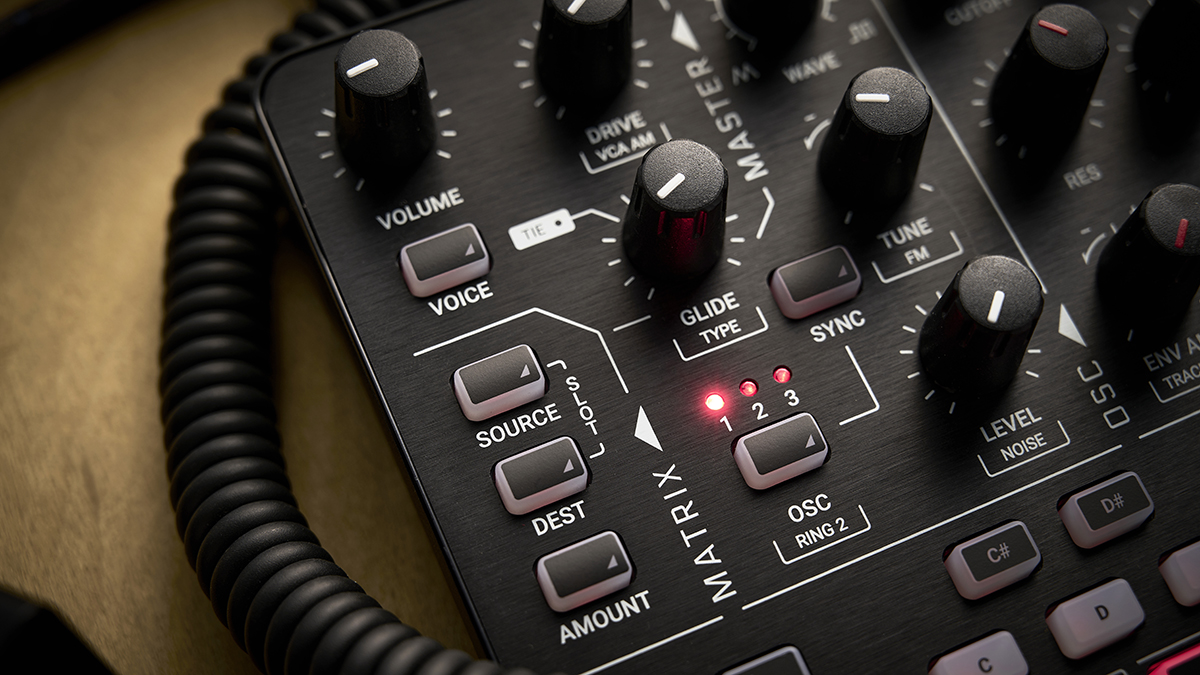
The Modulation Matrix
Modulation on UNO Synth Pro X is a little different to that on the other machines in the range as the grid matrix has gone. In its place are just three buttons for Source, Destination and Amount. Hit the first two to select a slot (from 16) using either the Data dial to cycle through them or the 16-step sequencer buttons (a red button indicates a slot is being used; off means it’s not).
Once you have selected from your 16 slots, you hit Source to choose from some 38 sources – oscillator and filter parameters, velocity, aftertouch, envelopes, LFO etc – and then assign a destination. Among the sources and destinations are the two CV and Gate inputs and outputs so you can connect and control (or be controlled by) an external modular synth setup, for example.
While the way to set the Matrix up is slightly different on Pro X, it is very intuitive, and it’s also easy to dive in and out of if you are just playing presets, sequencing or doing something else on Pro X. You just select a slot, source and destination and you’re sorted, in as quick a time as it takes to read this sentence!
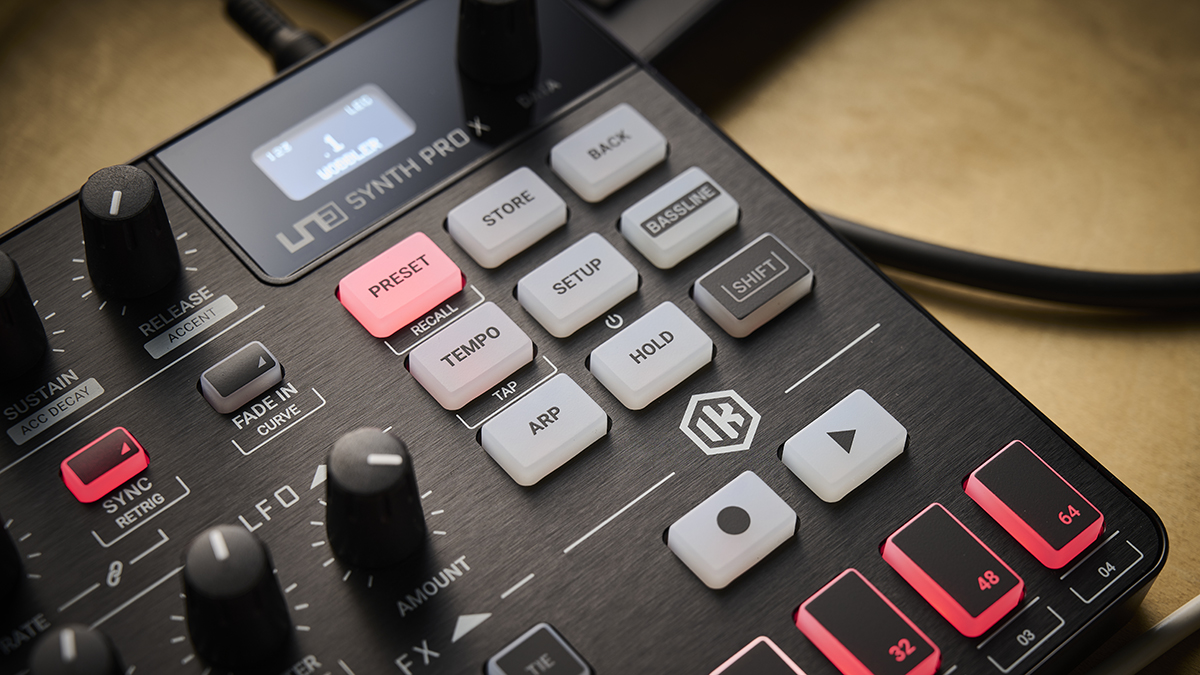
Verdict
IK’s UNO Synth Pro X is a fantastic analogue synth and the first in the UNO Synth line to feel like it’s truly unlocking the potential of an engine that has always been pretty good. It’s more appealing if you want to tweak and spend more time designing sounds, and the effect flexibility and controls help open up new possibilities in this regard.
UNO Synth Pro X is the same price as the Pro with the full-sized keyboard, so measured against that as its direct competitor, you would choose one for the extra controls and the other for the playing experience. This makes it a slightly harder choice to make. Ideally, you’d want one with the controls /and/ the keyboard – and we can see this being a future IK Product (the Pro XL or XK?). But were we to choose between the two, we’d probably veer towards the Pro X to put on our desktop and control it with an external keyboard.
It’s a great-sounding and well-priced synth and a bit of a left turn for the UNO Synth range and perhaps one we didn’t expect, but now we’ve got it, we realise we really do want those extra controls! The engine in the range was always big, fat and juicy and UNO Synth Pro X adds a few fuel injections and access points to make it that much more flexible and sonically appealing. UNO Synth Pro X really is a lot of analogue synth for the cash.
MusicRadar verdict: This is the first UNO Synth to feel like a Proper analogue synth and the sound is as big and bold as ever. Great for sounds used in every electronic music genre and for designing your own.
IK Multimedia UNO Synth Pro X: Hands-on demos
MusicRadar
IK Multimedia UNO Synth Pro X: Specifications
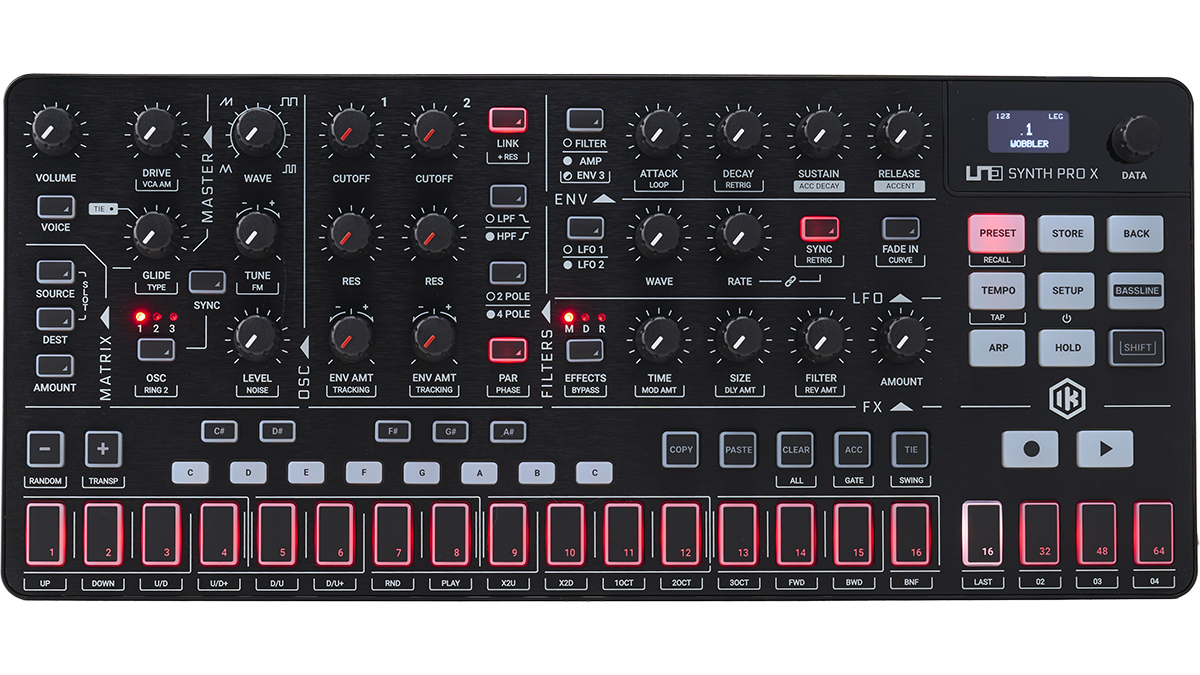

- Digitally-controlled analogue synthesizer
- 3 oscillators (variable waveshape)
- Paraphonic architecture
- 2 filters (2/4 pole, HP/LP)
- 2 LFOs
- 3 envelopes
- 16-slot Modulation Matrix
- 10 effects (2 modulation, 5 delay, 3 reverb) in 3 slots
- 64-step sequencer
- Arpeggiator
- 256 presets
- MIDI in/out
- Audio out x 2 (6.3mm) plus 3.5mm headphone
- Audio in (3.5mm)
- 2 x CV Gate in and out
- USB C (can be powered by this)
- PSU jack
- Dimensions: W x D x H (mm): 333 x 150 x 50
- Weight (g): 800
- CONTACT: IK Multimedia
Andy has been writing about music production and technology for 30 years having started out on Music Technology magazine back in 1992. He has edited the magazines Future Music, Keyboard Review, MusicTech and Computer Music, which he helped launch back in 1998. He owns way too many synthesizers.
“Chris, that’s not how it goes”: Chris Martin does his best Bruno Mars impression as Rosé joins Coldplay on stage to perform APT in South Korea
“OMG the cops are shutting us down!”: Lorde’s impromptu New York Washington Square Park gig just got axed by police
"Fender will not get preferential treatment": Reverb has been sold by Etsy to investors in Fender and SoundCloud - but says its partnership with the guitar manufacturer "remains unchanged"
